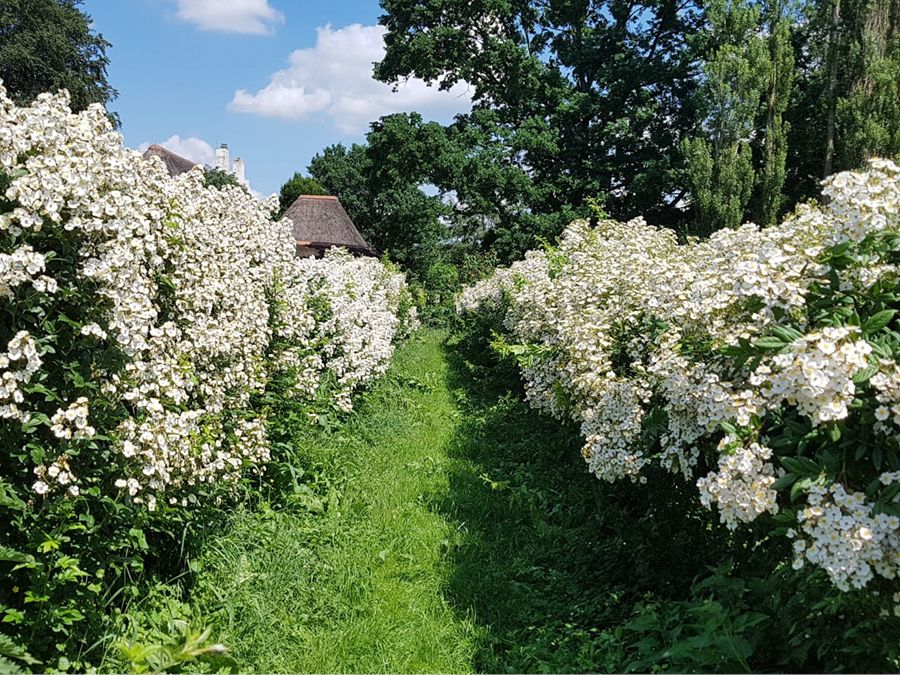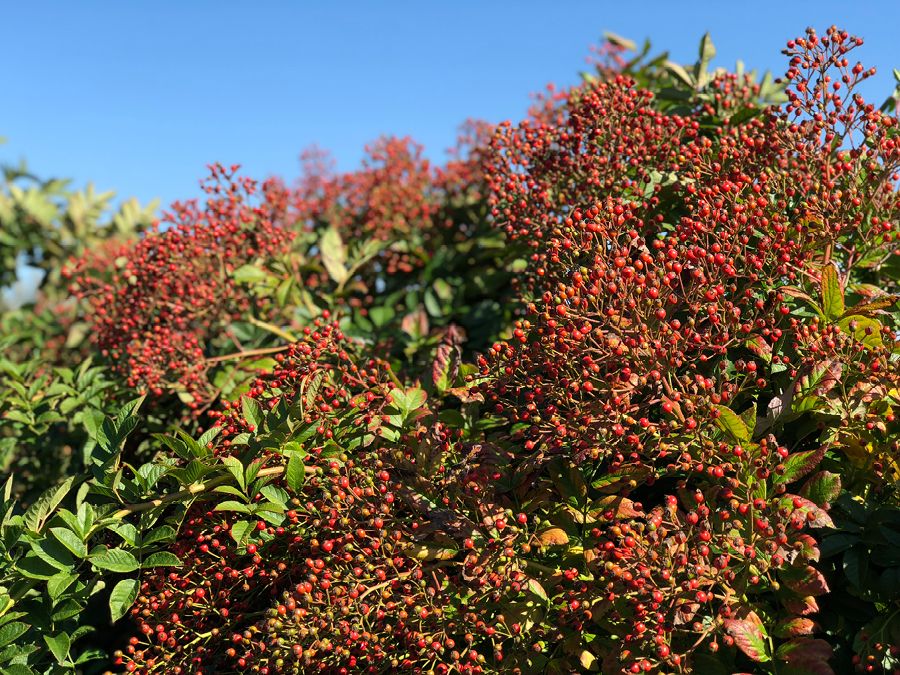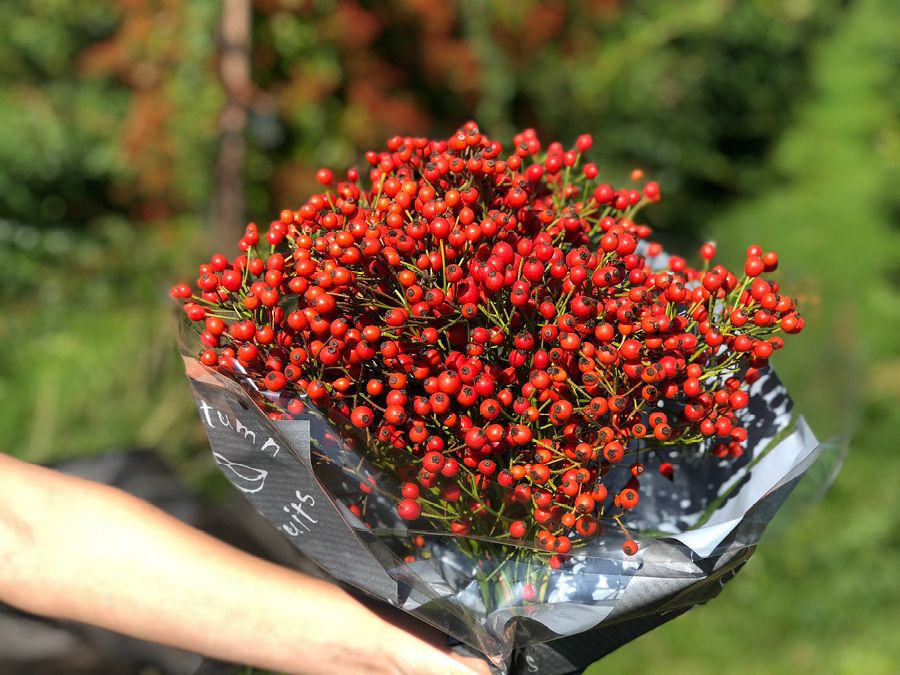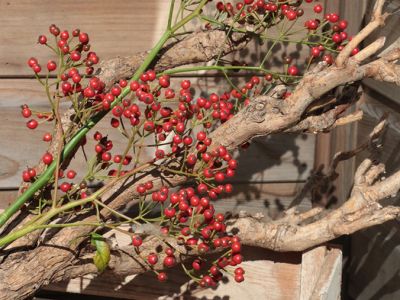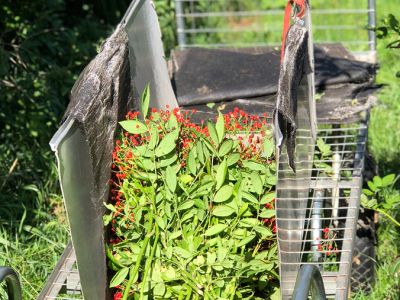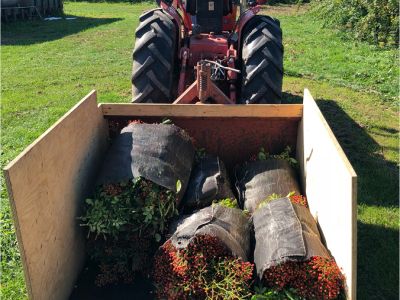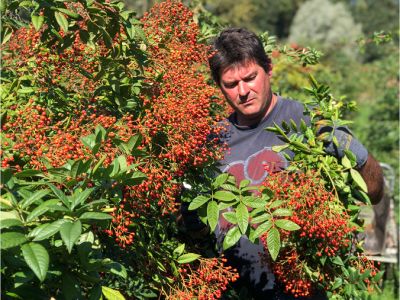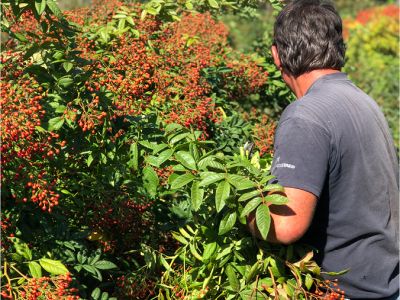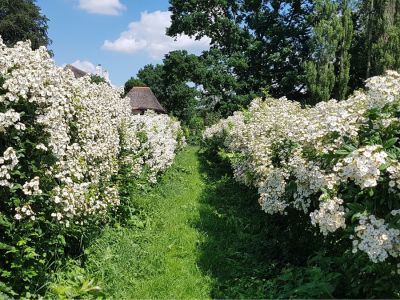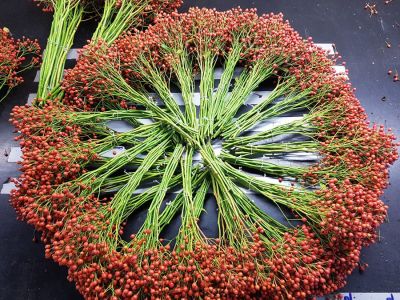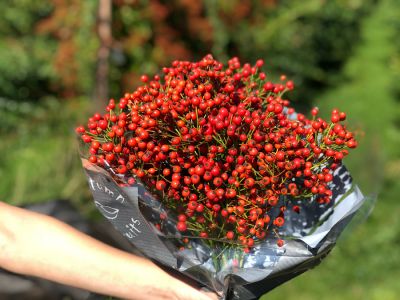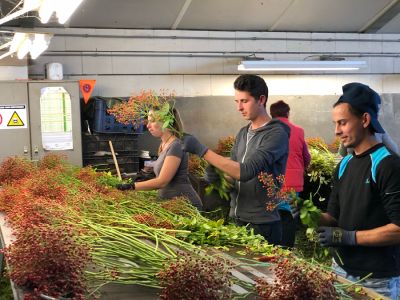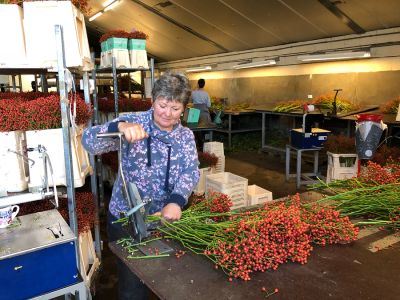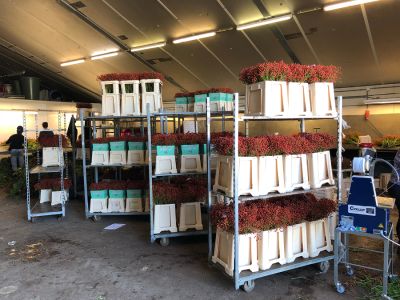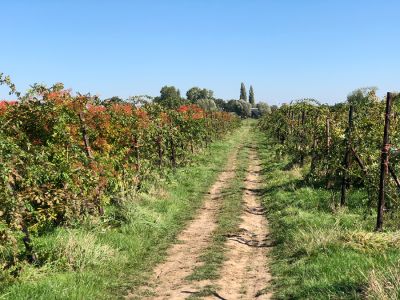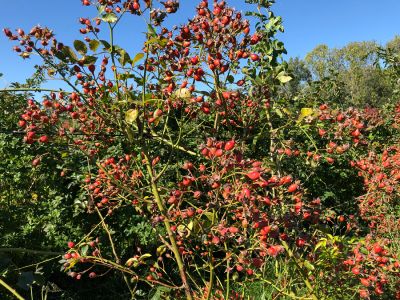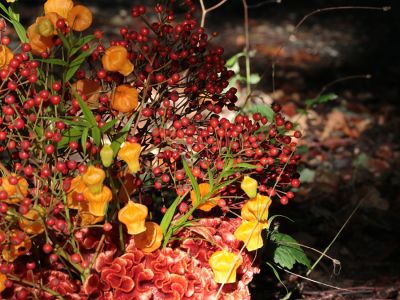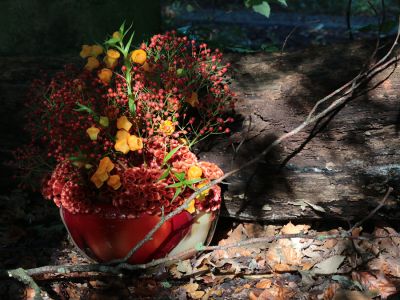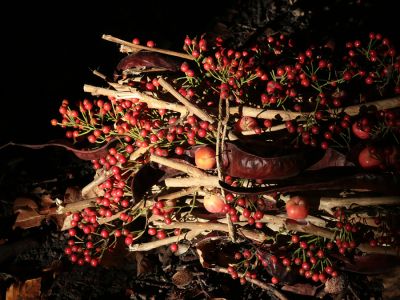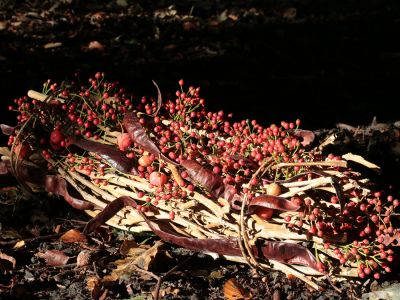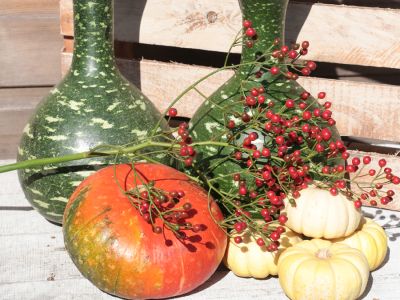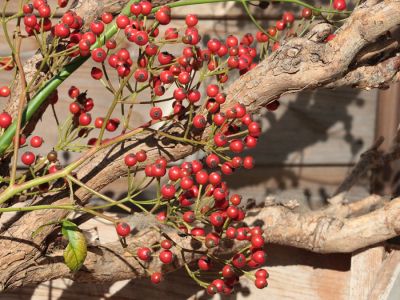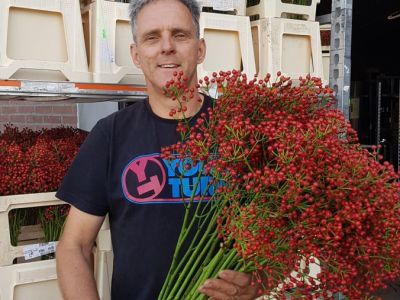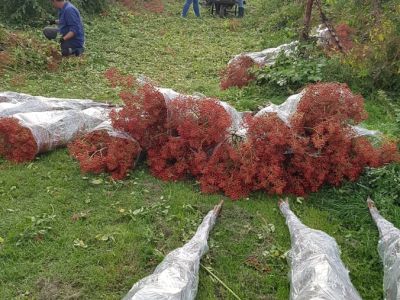Rosa Autumn Joy en Autumn Spirit
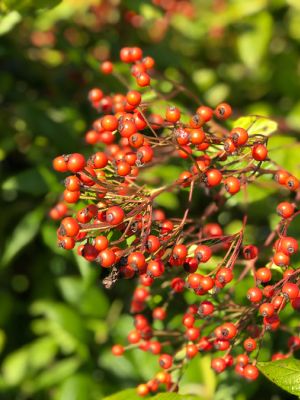
Calendar
The Rose Hips 'Autumn Joy' & 'Autumn Spirit' are, depending on the weather, available from mid-August till November.
In the spotlights
Michaël Kool studied horticultural plant cultivation at the University of Wageningen. Afterwards, he completed eight years of research on the optimization of greenhouse cultivation with a practical translation. But Michaël does not like sitting behind a computer and prefers to work with his hands, so he only uses his knowledge to grow his amazing rose hips. In the town of Wilp he has his rose-hip farm in the middle of nature, which he started 18 years ago. Here, Michaël enthusiastically received us to share his story with us.
Added value of the municipality
It was quite an experience for us to walk through the rose garden with Michael. We can see how his 5.5 hectare rose garden are an added value for the municipality. Late May, early June, the garden turns white with rose blossoms and many cyclists stop to enjoy the view. In addition, birds, hares, deer and other animals also visit the garden for shelter or food.
In the spotlight
In the spotlight of this week we present the rose hips Autumn Joy and Autumn Spirit; rose hips with a long stem and a full head with small fruits. Michaël is doing his best to put improved and new rose hips on the market, but that is not always recognized and acknowledged by the trade. It is a great opportunity for us to give more recognition to the different types of rose hips that are available.
The most famous rosehip is the Fair Jewel, a kind of cultivation that Michaël has been growing since 1998, when he first started growing. Nowadays Michaël also has his own cultivars in the Autumn series and new selections such as the Kool9 and Kool012. He selects the plants with long side branches and a full head. This is how he tries to distinguish himself from the rest. The Fair Jewel remains the absolute favorite among the buyers, because this name is the most well-known. So many rosehips are being supplied under this name and under the name Plenty, while in reality they are not. Michaël has shown us different rose hips and they are all different in terms of length, size and color. Definitely worth it to delve into the wide range that is available!
Cold nights
When the summer months are over and autumn has arrived, the rose hips turn red after the first cold nights. The rose hips need cold nights to develop. From that moment on, Michaël can cut his rose hips until the end of October. It is therefore very busy in his garden during these 10 weeks. With the help of 12 staff members he ensures that all those beautiful rose hips are cut, defoliated and bunched. His cultivation depends on good staff, who know what they are doing and carefully handle the crop. He is therefore very pleased that the majority of his staff keeps coming back year after year to help him get the job done.
Seasonal product
Cultivation is hard work for Michael, but it allows him to stay very close to nature. The rose hip appeals to him because it’s a multi-year crop needing a lot of knowledge and expertise in crop care. It is a seasonal product that grows in the open air. "If you grow gerberas, you really have to be an entrepreneur who knows exactly what the market wants, so that you can deliver all year round." Michaël is a loyal clock seller who goes with the season and delivers his products during a period of ten weeks.
Michael gave the golden tip for florists! If you dry rose hips on water, they will stay nice for months. After half a year you polish them up and they shine again! That is of course a nice story to give if you sell a rosehip wreath.

The cultivation
Michaël now develops his own varieties, but it’s a long and difficult process! He is a real grower who sees the power of the product. "I am not really an entrepreneur, that's why I also take the majority of my products to the clock"
Old plants
If a plant remains free of diseases, it can get as old as 15 years. The plants are most susceptible to wilt (Verticillium). The plants can no longer absorb water and gradually die. Harvesting takes places during ten weeks in the year, but throughout the year Michael is busy pruning and tying up the plants. In the winter, shoots are removed during the first cut that have yielded harvestable branches. Also the new shoots are then thinned out. During the second pruning, in the summer, the surplus of vegetative shoots are pruned to keep an open bush and sufficient lighting. The rose hips are easier to harvest and get more space.
Selecting
The process of selecting your own varieties can take 7 to 8 years. Some new varieties originated from spontaneous seedlings that Michaël followed for one or two seasons. He looks at the quality and checks whether the quality is good enough and whether the product is interesting for cultivation. If the plant seems to be good enough after observing, he clones the plant using cuttings. He follows the crop again for another two seasons to see how it grows. As a final step, he checks if he can make 100 plants from the new species to be planted as a group. If they are in a group, it is easier to tell if the plant can cope with diseases. You see how diseases jump or not and how sensitive a group is.
FloraPodium, 26 September 2018






